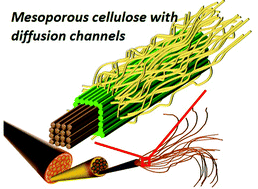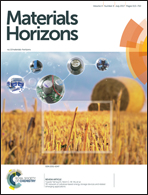3D network of cellulose-based energy storage devices and related emerging applications
Abstract
There has recently been a major thrust toward advanced research in the area of hierarchical carbon nanostructured electrodes derived from cellulosic resources, such as cellulose nanofibers (CNFs), which are accessible from natural cellulose and bacterial cellulose (BC). This research is providing a firm scientific basis for recognizing the inherent mechanical and electrochemical properties of those composite carbon materials that are suitable for carbon-electrode applications, where they represent obvious alternatives to replace the current monopoly of carbon materials (carbon nanotubes, reduced graphene oxide, and their derivatives). Significant promising developments in this area are strengthened by the one dimensional (1D) nanostructures and excellent hydrophobicity of the CNFs, the interconnected pore networks of carbon aerogels, and the biodegradable and flexible nature of cellulose paper and graphenic fibers. Outstanding electrode materials with different dimensions (1D, 3D) are derivable by the strategic choice of cellulose sources. This development requires special attention in terms of understanding the significant impact of the cellulose morphology on the final electrochemical performance. This review article attempts to emphasize the role of the different structural forms and corresponding composites derived from different forms of cellulose, including bacterial cellulose and its varied 3D nanostructures. This article strongly highlights that cellulose deserves special attention as an extremely abundant and extensively recyclable material that can serve as a source of components for electronic and energy devices. Along with emphasizing current trends in electrochemical device components from cellulose, we address a few emerging areas that may lead in future such as enzyme immobilization, flexible electronics, modelling of cellulosic microfibrils. Finally, we have discussed some of the important future prospects for cellulose as source of materials for future.



 Please wait while we load your content...
Please wait while we load your content...